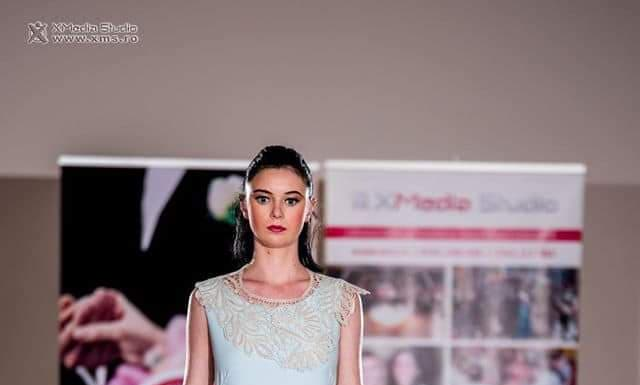By Alexandra Paucescu.
I see diplomacy like the finest art of communication and negotiation across cultures. It is like the fine warp of a precious and fragile lace. It takes time and energy to create it, each part has its own unique beauty and delicacy and you must always be careful how you use it, because it can be destroyed at any time.
I have always admired lace, this precious fabric, with its finesse and delicacy, its soft touch and the way it ennobles any outfit. Fine craftsmanship dating from the 16th century, it was initially developed in Belgium, Germany and the Netherlands, but it quickly spread around Europe, as a prerogative of wealthy people from high society. In those times, few meters of lace cost as much as a plot of land.
Working with lace is a long and time-consuming process which requires skills and talent. It is highly refined manual labor, with couture sewing techniques. But the end results are so worth it.
Rodica Grigorita is one of those people who master this fine art and best understand its subtlety.
Born in Moldova, this small country, sister to Romania, at the border of the European Union, she confesses that she was always passionate about art, since she was a child. She sewed her first dress when she was only 9 years old. But destiny took her to Bucharest, Romania, where she studied Physics and where she met her great love and future husband. Then, following him on diplomatic missions, she lived for years in Germany, Belgium and Switzerland. It wasn’t easy, she gave up her work and dedicated her life to her family and her two children, as most of us do…
‘The first encounter with lace happened while I was in Germany. It all started with a visit to the Goethe Museum in Frankfurt in 2006, when the guide told us about the writer’s mother, who played a decisive role in his life and showed us her small pillow with spindles and needles, on which she made lace. Knowing how to sew, knit and embroider as a child, I was very moved by this small detail and I started to ask myself a thousand questions about this old technique. So I decided to enroll in lace classes organized with the support of the Frankfurt church. That’s how it all started.’
It was the beginning of an artistic career started out of curiosity and passion. She then attended the Fashion and Graphic Design School in Offenbach-am-Main, where she learned about lace and also hat design, how to create a collection and much more. Moving to Brussels, she continued her studies at the Art Academy, studying lace with Genevieve Kesteloot.
‘I confess that it was a very difficult time, out of the 80 people that started the academic year, only a few graduated. But I was one of them. Afterwards I specialized in fashion design at the house of Joan de Rijck and then the exhibitions and fashion shows began. Over time I had exhibitions at Galerie Mediatine and Salle Fabry in Brussels, I presented my collections at the Fashion Festival in Bucharest and organized exhibitions in my hometown, Chisinau. In Geneva I participated at art exhibitions at the invitation of UN and WIPO. I am also a member of the International Lace Organization.’
She says that, although her life was difficult and exhausting at times, ‘a life of boxes’ as she put it, she would do it all over again, in a heartbeat!
She sees her role as a diplomatic spouse important, as it is the pillar of her family and also a representative of her country abroad. ‘When you come from a small country like Moldova, you are confronted sometimes by the fact that many people have not heard of it at all and it only depends on you how you will present your country, make it known and respected abroad. Always be diplomat, respect the person you speak to, don’t get into controversy, especially if you don’t know the subject well and never discuss religion!’
Living a life in the diplomatic world surely consumes you immensely.
Her advice to others, at the beginning of this road: ‘Learn as much as possible, accumulate impressions, knowledge and make people around you admire you and your country. Never despair, even if you have to take it every time from the beginning, the clouds pass, the sun rises and beautiful memories remain.’

About the author:
Alexandra Paucescu- Romanian, Management graduate with a Master in Business, studied Cultural Diplomacy and International Relations.
She speaks Romanian, English, French, German and Italian. Turned diplomatic spouse by the age of 30, she published a book about diplomatic life, writes articles and also gives lectures on intercultural communication.






